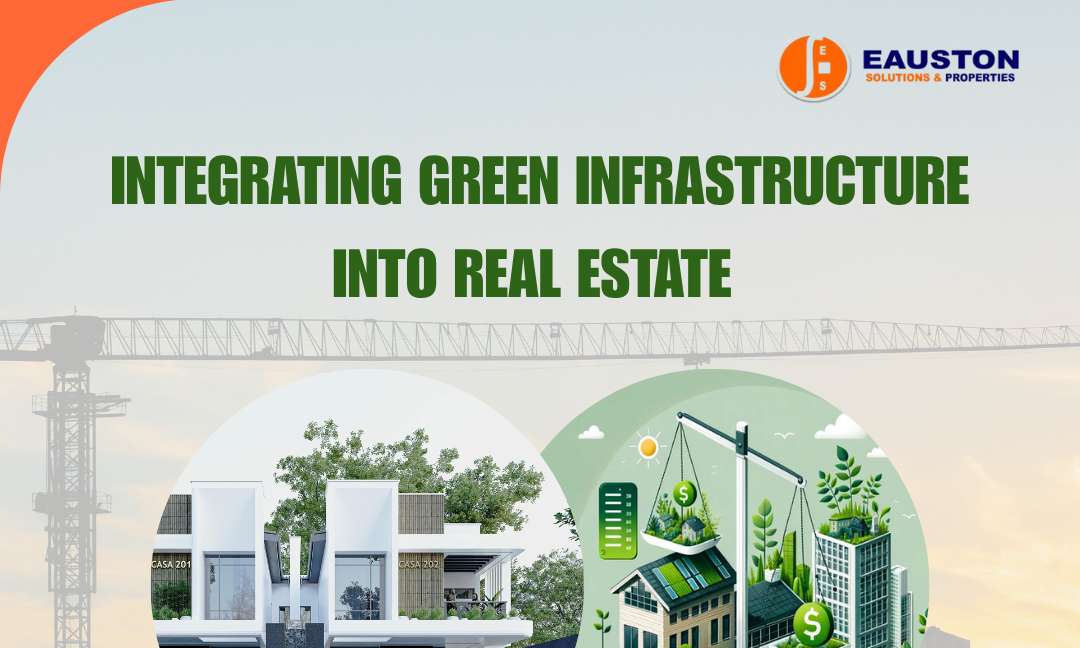BY: ONUGHA ONYEDIKACHI PRECIOUS FOR: EAUSTON SOLUTIONS AND PROPERTIES
The conversation in real estate has fundamentally changed. When I talk to developers and investors today, the focus is no longer just on securing land and pouring concrete; it’s about building assets that survive and thrive through the next fifty years. We’re moving past outdated, short-term profit models and embracing a new ideology: sustainable development. In the context of real estate, sustainable development means creating built assets and communities that minimize their environmental footprint, consume fewer resources like water and energy, and actively promote the health and well-being of the people who use them, all while maintaining robust economic viability.
The Investor's Dilemma: Facing the 2025 Mandate Imagine a real estate investor, whose prime commercial property in Lagos just absorbed two punishing blows: first, a torrential rain event that damaged the ground floor entrance, leading to insurance headaches; and second, the crushing reality of diesel generator costs that have eaten 40% of his quarterly Net Operating Income. He knows he can’t sustain this. His older asset is directly failing due to the trifecta of threats gripping the global market: climate volatility, resource scarcity, and soaring operational costs. Unpredictable weather, from intense heat waves to destructive floods, is now a direct hit on property value. Furthermore, reliance on expensive, often unreliable public utilities for power and water drives operational costs through the roof, a reality keenly felt by every property owner in Nigeria. Finally, a new generation of buyers and corporate tenants actively seeks structures that align with their health and environmental values. This common challenge is why Green Infrastructure (GI) is no longer optional; it’s a non-negotiable built environment defence strategy. This vital vision is made real through the practical integration of GI.
Beyond the Aesthetics: Green Infrastructure as Engineered Asset Protection What exactly is Green Infrastructure? It’s simply the principle of using natural systems to manage resources within our built environment. I often tell people to think of GI not as fancy landscaping, but as engineered ecology. These are physical systems that deploy Low Impact Development (LID) techniques, such as green roofs (rooftops planted with vegetation that insulate buildings, dramatically reducing cooling costs, and filtering rainwater), rain gardens and bioswales (planted depressions designed to collect and slow stormwater runoff), and permeable pavement (surfaces that allow water to seep into the ground naturally instead of causing floods). The critical role of GI is this: it transforms the biggest threats to a building which are water and heat into manageable, even valuable, resources. By deploying these techniques, we protect the project’s physical structure, extend its lifespan, and drastically reduce the strain on public infrastructure.
The Investment Verdict: Why Green is Gold for Real Estate Investors For investors and property owners, the most compelling argument for GI is purely financial, confirming that Green is Gold. While there is an initial cost, this investment acts as a powerful lever for profitability and long-term value that traditional buildings simply cannot match.
Superior Net Operating Income (NOI) via Lower Operational Costs This value is first seen in the Superior Net Operating Income (NOI) via Lower Operational Costs. Green buildings are inherently efficient, and in the Nigerian context, the financial impact is magnified. Integrating solutions like solar power and green roof insulation drastically cuts reliance on expensive, noisy generators, slashing fuel and maintenance costs. These savings stack up over decades, directly and substantially increasing the property’s NOI, which in turn translates immediately into a higher capitalized value for the asset.
Premium Valuation, Market Liquidity, and Resilience Beyond operational savings, Green Infrastructure delivers Premium Valuation and Market Liquidity. The market is aggressively pricing in sustainability; properties with proven green features can command a 15% to 30% increase in sale or rental value compared to conventional buildings in the same location. This enhanced appeal, often linked to corporate ESG mandates, makes your asset more liquid and future-proof against regulatory changes. Crucially, GI provides Enhanced Resilience and a Lower Risk Profile. A GI-equipped property is fundamentally less vulnerable to climate risks. Permeable pavement and bioswales secure the site's accessibility and protect foundational integrity during heavy rains, a critical advantage in flood-prone areas like Rivers State. This enhanced resilience reduces the property's risk profile, potentially leading to lower insurance premiums and securing the asset’s longevity and investor capital.
Clearing the Hurdles: Practical Pathways to Profitability To overcome the common hurdle of high upfront cost, developers and investors must adopt smarter strategies. This starts with Embracing Life Cycle Costing (LCC), calculating the true costs over a 30-year span to show that the "expensive" green option becomes the cheaper, more profitable long-term choice. We must also Integrate Early and Holistically, including ecology specialists, architects, and engineers at the very first planning stage to ensure an efficient, value-adding system. The Nigerian market presents immense opportunities for this transformation; by integrating local solutions like efficient cooling systems and urban tree canopies, developers are creating truly independent and desirable assets that set a benchmark for future development. Investors who recognize this necessity now are securing the most profitable and future-proof properties.
Final Word: Building for the Next Century Today, the real estate investor’s second asset, built with integrated GI, enjoys a 25% higher NOI and has weathered two severe rain seasons without a claim. Integrating Green Infrastructure is far more than an environmental movement; it is a mandatory economic necessity for today’s real estate investor. It supports the environment by preserving natural resources, strengthens the economy by creating high-value, resilient assets, and dramatically improves the individual quality of life for residents. We, as developers, investors, and professionals, have a choice: build for the next five years or build for the next century. By committing to Green Infrastructure, we are not just building structures; we are building superior, highly competitive, and sustainable legacies. The future of real estate demands this level of commitment, and the financial rewards are waiting for those who lead the way


